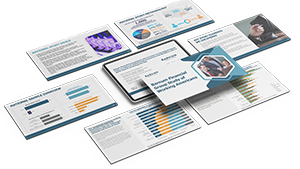
Making decisions about your retirement account can seem overwhelming, especially if you feel unsure about your knowledge of investments. However, the following basic rules can help you make smarter choices regardless of whether you have some investing experience or are just getting started.
1. Don’t lose ground to inflation
It’s easy to see how inflation affects gas prices, electric bills, and the cost of food; over time, your money buys less and less. But what inflation does to your investments isn’t always as obvious. Let’s say your money is earning 4% and inflation is running between 3% and 4% (its historical average). That means your investments are earning only 1% at best. And that’s not counting any other costs; even in a tax-deferred retirement account such as a 401(k), you’ll eventually owe taxes on that money. Unless your retirement portfolio keeps pace with inflation, you could actually be losing money without even realizing it.
What does that mean for your retirement strategy? First, you might need to contribute more to your retirement plan than you think. What seems like a healthy sum now will seem smaller and smaller over time; at a 3% annual inflation rate, something that costs $100 today would cost $181 in 20 years. That means you may need a bigger retirement nest egg than you anticipated. And don’t forget that people are living much longer now than they used to. You might need your retirement savings to last a lot longer than you expect, and inflation is likely to continue increasing prices over that time. Consider increasing your 401(k) contribution each year by at least enough to overcome the effects of inflation until you hit your plan’s contribution limits.
Second, you may consider investing a portion of your retirement plan in investments that can help keep inflation from silently eating away at the purchasing power of your savings. Cash alternatives such as money market accounts may be relatively safe, but they are the most likely to lose purchasing power to inflation over time. Even if you consider yourself a conservative investor, remember that stocks historically have provided higher long-term total returns than cash alternatives or bonds, even though they also involve greater risk of volatility and potential loss.
Past performance is no guarantee of future results.
Money market funds are neither insured nor guaranteed by the Federal Deposit Insurance Corporation or any other government agency. Although money market funds seek to preserve the value of your investment at $1.00 per share, it is possible to lose money by investing in such a fund.
2. Invest based on your time horizon
Your time horizon is investment-speak for the amount of time you have left until you plan to use the money you’re investing. Why is your time horizon important? Because it can affect how well your portfolio can handle the ups and downs of the financial markets. Someone who was planning to retire in 2008 and was heavily invested in the stock market faced different challenges from the financial crisis than someone who was investing for a retirement that was many years away, because the person nearing retirement had fewer years left to let their portfolio recover from the downturn.
If you have a long time horizon, you may be able to invest a greater percentage of your money in something that could experience more dramatic price changes but that might also have greater potential for long-term growth. Though past performance doesn’t guarantee future results, the long-term direction of the stock market has historically been up despite its frequent and sometimes massive fluctuations.
Think long term for goals that are many years away and invest accordingly. The longer you stay with a diversified portfolio of investments, the more likely you are to be able to ride out market downturns and improve your opportunities for gain.
3. Consider your risk tolerance
Another key factor in your retirement investing decisions is your risk tolerance — basically, how well you can handle a possible investment loss. There are two aspects to risk tolerance. The first is your financial ability to survive a loss. If you expect to need your money soon — for example, if you plan to begin using your retirement savings in the next year or so — those needs reduce your ability to withstand even a small loss. However, if you’re investing for the long term, don’t expect to need the money immediately, or have other assets to rely on in an emergency, your risk tolerance may be higher.
The second aspect of risk tolerance is your emotional ability to withstand the possibility of loss. If you’re invested in a way that doesn’t let you sleep at night, you may need to consider reducing the amount of risk in your portfolio. Many people think they’re comfortable with risk, only to find out when the market takes a turn for the worse that they’re actually a lot less risk tolerant than they thought. Often that means they wind up selling in a panic when prices are lowest. Try to be honest about how you might react to a market downturn and plan accordingly.
There are ways to help manage risk. For example, understanding the potential risks and rewards of each of your investments and their role in your portfolio may help you gauge your emotional risk tolerance more accurately. Also, having money deducted from your paycheck and put into your retirement plan helps spread your risk over time. By investing regularly, you reduce the chance of investing a large sum just before the market turns downward.
4. Integrate retirement with your other financial goals
Think about establishing an emergency fund; it can help you avoid needing to tap your retirement savings before you had planned to. Generally, if you withdraw money from a traditional retirement plan before you turn 59½, you’ll owe not only the amount of federal and state income tax on that money but also a 10% federal penalty (and possibly a state penalty as well). There are exceptions to the penalty for premature distributions from a 401(k), such as having a qualifying disability or withdrawing money after leaving your employer after you turn 55. However, having a separate emergency fund can help you avoid an early distribution and allow your retirement money to stay invested.
If you have outstanding debt, you’ll need to weigh the benefits of saving for retirement versus paying off that debt as soon as possible. If the interest rate you’re paying is high, you might benefit from paying off at least part of your debt first. If you’re contemplating borrowing from or making a withdrawal from your workplace savings account, make sure you investigate using other financing options first, such as loans from banks, credit unions, friends, or family. If your employer matches your contributions, don’t forget to factor into your calculations the loss of that matching money if you choose to focus on paying off debt. You’ll be giving up what is essentially free money if you don’t at least contribute enough to get the employer match.
5. Don’t put all your eggs in one basket
Diversifying your retirement savings across many different types of investments can help you manage the ups and downs of your portfolio. Different types of investments may face different types of risk. For example, when most people think of risk, they think of market risk — the possibility that an investment will lose value because of a general decline in financial markets. However, there are many other types of risk. Bonds face default or credit risk (the risk that a bond issuer will not be able to pay the interest owed on its bonds, or repay the principal borrowed). Bonds also face interest-rate risk, because bond prices generally fall when interest rates rise. Investing internationally carries additional risks such as differences in financial reporting, currency exchange risk, and economic and political risk unique to the specific country. This may result in greater share price volatility. Political risk is created by legislative actions (or the lack of them).
These are only a few of the various types of risk. However, one investment may respond to the same set of circumstances very differently than another. Putting your money into many different securities, as a mutual fund does, is one way to spread your risk. Another is to invest in several different types of investments — for example, stocks, bonds, and cash alternatives. Spreading your portfolio over several different types of investments can help you manage the types and level of risk you face.
Participating in your retirement plan is probably more important than any individual investing decision you’ll make. Keep it simple, stick with it, and value time as a strong ally.
Because inflation could reduce your purchasing power over time, you’ll probably need to contribute more to your retirement plan than you think. What seems like a healthy amount now is likely to feel smaller and smaller over time.
All investing involves risk, including the possible loss of principal, and there can be no guarantee that any investment strategy will be successful. Asset allocation and diversification do not guarantee a profit or protect against investment loss.
The dollar-cost averaging you do when you make automatic contributions to the investments in your retirement plan account involves continuous investment in securities regardless of price changes. You should consider your financial and emotional ability to continue making purchases during times when prices are low. Dollar-cost averaging does not guarantee a profit or protect against a loss.
Mutual funds are sold by prospectus. Please consider the investment objectives, risks, charges, and expenses carefully before investing. The prospectus, which contains this and other information about the investment company, can be obtained from your financial professional. Be sure to read the prospectus carefully before deciding whether to invest.
IMPORTANT DISCLOSURES
This material was prepared by Broadridge Investor Communication Solutions, Inc. This information is believed to be from reliable sources; however, no representation is made as to its accuracy or completeness. This information does not constitute tax or legal advice and may not be relied on for the purpose of avoiding any Federal tax penalty, nor is it a solicitation or recommendation to purchase or sell any insurance or investment product or service, and readers should not rely upon it as such. Readers should seek such advice from their own tax or legal counsel or financial professional. Securities, investment advisory and financial planning services through qualified registered representatives of MML Investors Services, LLC. Member SIPC. 6 Corporate Drive, Shelton, CT 06484. Tel: 203-513-6000.



